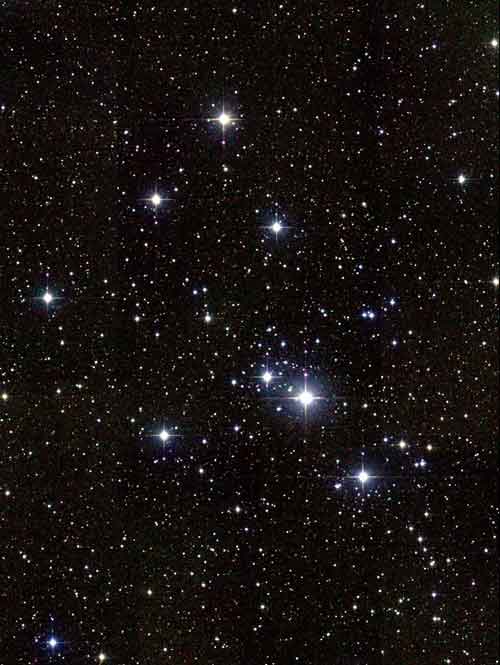M 41 "Atlas Image [or Atlas Image mosaic] obtained as part of the Two Micron All Sky Survey (2MASS), a joint project of the University of Massachusetts and the Infrared Processing and Analysis Center/California Institute of Technology, funded by the National Aeronautics and Space Administration and the National Science Foundation."
Messier 41 (also known as M 41 or NGC 2287) is an open cluster in the Canis Major constellation. It was discovered by Giovanni Batista Hodierna before 1654 and was perhaps known to Aristotle about 325 BC.[2] M 41 is lying about 4 degrees nearly exactly south of Sirius and contains about 100 stars. Among these are several red giants, the brightest being spectral type K3, and located near its center. The cluster is estimated to be moving away from us at 23.3 km/s.[1] The diameter of the cluster is between 25 and 26 light years. Its age is estimated at between 190 and 240 million years old. M 41 may also be referred to as NGC 2287. Links
References
Retrieved from "http://en.wikipedia.org/"

|
|
||||||||||||||||||||||||||||||||||
